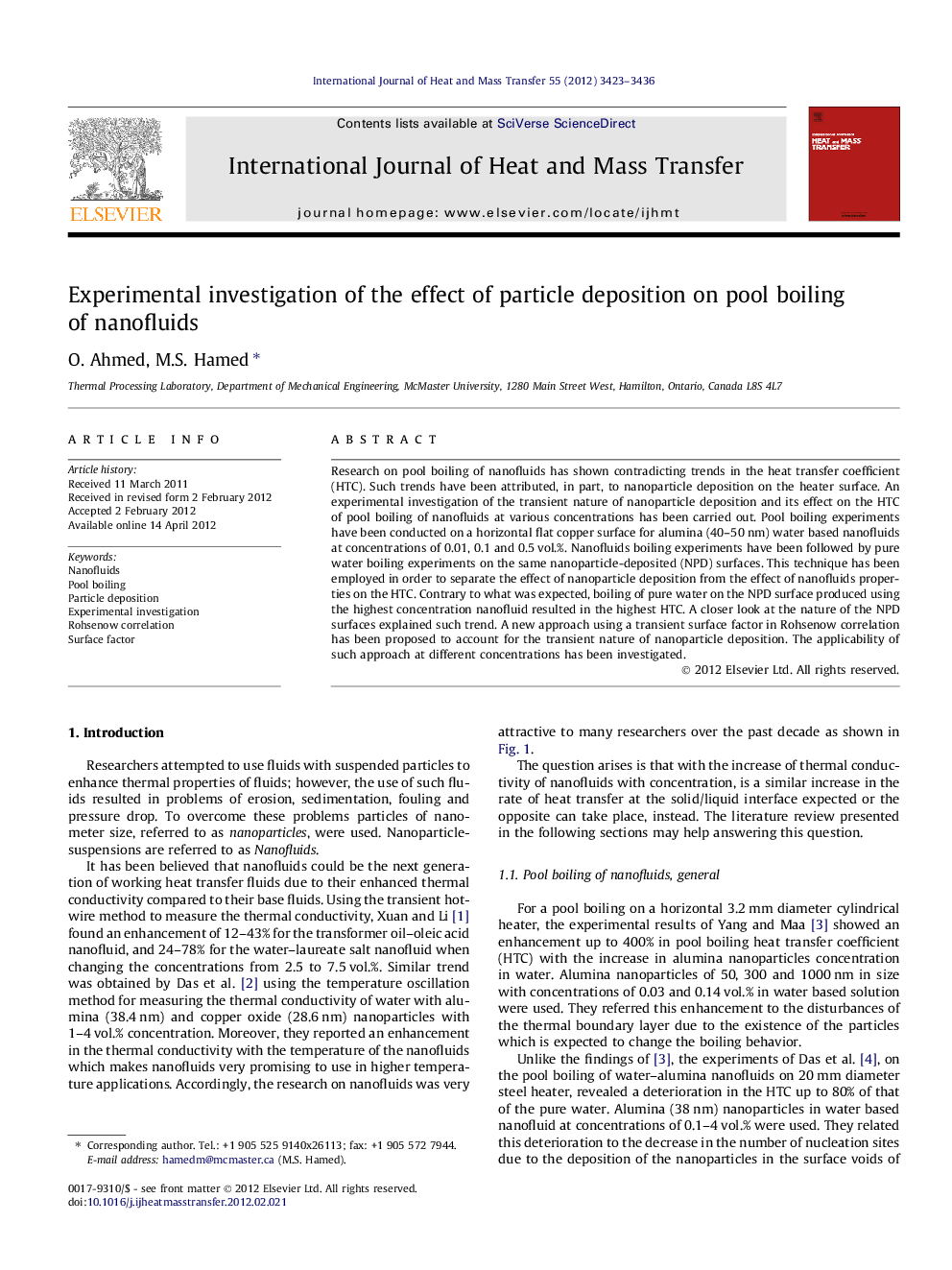| Article ID | Journal | Published Year | Pages | File Type |
|---|---|---|---|---|
| 658370 | International Journal of Heat and Mass Transfer | 2012 | 14 Pages |
Abstract
Research on pool boiling of nanofluids has shown contradicting trends in the heat transfer coefficient (HTC). Such trends have been attributed, in part, to nanoparticle deposition on the heater surface. An experimental investigation of the transient nature of nanoparticle deposition and its effect on the HTC of pool boiling of nanofluids at various concentrations has been carried out. Pool boiling experiments have been conducted on a horizontal flat copper surface for alumina (40-50Â nm) water based nanofluids at concentrations of 0.01, 0.1 and 0.5Â vol.%. Nanofluids boiling experiments have been followed by pure water boiling experiments on the same nanoparticle-deposited (NPD) surfaces. This technique has been employed in order to separate the effect of nanoparticle deposition from the effect of nanofluids properties on the HTC. Contrary to what was expected, boiling of pure water on the NPD surface produced using the highest concentration nanofluid resulted in the highest HTC. A closer look at the nature of the NPD surfaces explained such trend. A new approach using a transient surface factor in Rohsenow correlation has been proposed to account for the transient nature of nanoparticle deposition. The applicability of such approach at different concentrations has been investigated.
Related Topics
Physical Sciences and Engineering
Chemical Engineering
Fluid Flow and Transfer Processes
Authors
O. Ahmed, M.S. Hamed,
